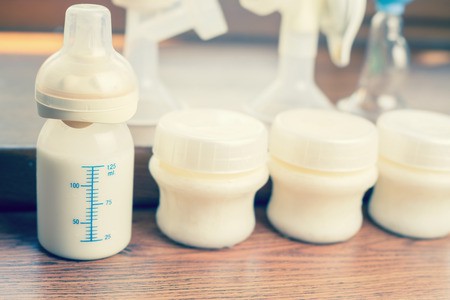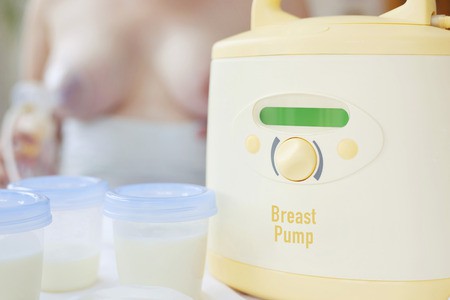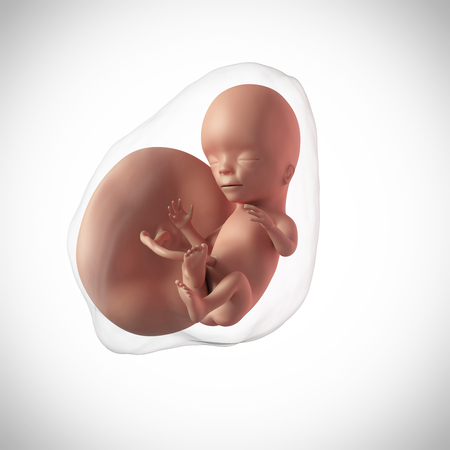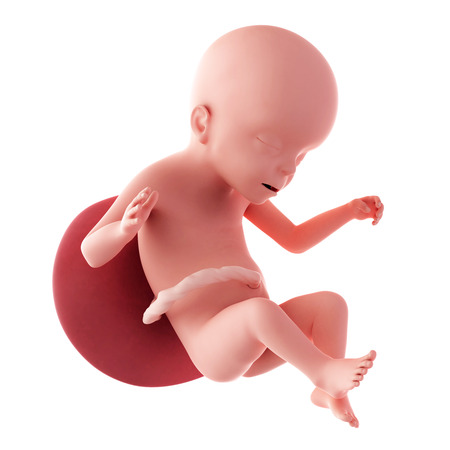Basics About Bottle Feeding and Breast Pumps
Immediately after birth, your baby is put to the breast. The skin to skin contact and early suckling helps to initiate breastfeeding by causing milk let down reflex. This is the normal course of events but there are many cases where the baby cannot be handed over to the mother immediately. The baby may be sick and needs to be kept in the NICU or the nursing mom has developed some medical complication. In such cases the breast milk has to be expressed with the help of breast pumps and fed to the baby or bottle feeding needs to be started. Both these options are viable and can take care of the nutritional needs of the newborn. But, for new parents, a number of questions such as, “Can you feed breastmilk and formula?”, “Is mix feeding breastmilk and formula a possible option?” or “how to make your child change from breast milk to formula?” arise related to feeding their newborn. So, here are some of the basic details you need to keep in mind regarding bottle feeding and using breast pumps for feeding your newborn.
Bottle Feeding Basics

There are many benefits of breastfeeding for mom. These days bottle feeding is becoming more and more common these days as working women plan to go back to work soon as soon as their maternity leave (12 weeks in most cases) ends. There are also many medical reasons associated with bottle feeding. If the mother develops a breast abscess or cracked nipple post delivery, the baby cannot suckle and so the bottle is the only viable option. In such conditions, it is best to use breastfeeding pumping only rather than latching the baby to the nipple for feeding. Bottle feeding for babies is safe if you keep in mind the following things:
- You must select a good quality feeding bottle which is BPA free. Before each use the bottle must be sterilized by dipping it in boiling water for 10-15 minutes. The nipple, cap and the bottle should be well sterilized. The bottle can be used to feed formula and breast milk. Always buy top brand baby bottles.
- Never use a microwave to warm or heat milk in a bottle. If you must warm it , then do so by dipping the bottle in a container of hot water.
- Never use an unsterilized bottle for feeding milk as it is associated with a high rate of infections in bottle fed babies.
- Change the nipple every 4-6 weeks as there may be cracks forming in the nipple and the baby will not be able to suck well. The bottle should be given to the child in the cradle position by keeping the baby on arm at 45 degrees. This is also the best breastfeeding position for newborns. Remember to burp your little one after every feed so that the excess air that is swallowed during feeding comes out.
- Always keep the bottle covered to avoid the nipple from getting contaminated. Use a newborn size nipple so that the bottle nipple most like breast.
- Use the measuring scale on the bottle to measure the feed. Normally newborns can take up to 30 ml per feed. Till time your baby is 10 pounds, he will feed up to 3 ounces (120ml) per feed. When feeding the baby with infant formula, it is very important to measure the ounces of water and the scoops of formula to be mixed. Exact proportions are mandatory in breastfeeding to formula feeding transition.
How to Use a Breast Pump?

If you choose to give breast milk in bottle for newborn then you will need to pump the milk using breast pumps. The breast pump can be used to collect the breast milk which can be given to the baby in your absence by the father or any other member of the family. It means that you do not need to be present for every feeding session. You can also choose to give your baby formula milk and breastfeeding together, but only after a proper consultation with your pediatrician. The following are the main uses of breast pumps.
- To increase your milk production
- To collect milk to feed a premature baby who cannot latch on to the breast. It is also useful if you have developed cracked nipples and feeding is very painful.
- To relieve breast pain which could occur due to excessive milk production. Pumping helps to relieve the breast engorgement.
- To maintain your supply of breast milk. In case you have been advised not to feed for a few days due to medical reasons or you are on medications not safe for the baby, your supply will go down. Pumping can help to keep it up till you resume breastfeeding your baby. But make sure you know the answers to questions like – “How often should I pump breast milk?”, etc. Pumping more or less than required directly affects the amount and quality of your breast milk.
There are many breastfeeding websites which have videos on using a breast pump. Attach the correct size shield (phalanges) or suction cup to the breast. It is connected to a bottle for the collection of the expressed milk. The milk is to the pumped out either manually or using an electric motor. The electric pumps are faster and more effective especially if you choose to pump on a daily basis before going to work. Manual pumps can take upto 45 minutes to collect the milk and are good for occasional use. The pump has to be cleaned after each session to avoid infections.
After expressing the milk, it should be stored in sterilized bottles. Try to store only the quantity that your baby takes at a time. Storing exact ounces helps to use the milk completely and you will not have to discard the left over milk. Write a date on the bottles if you plan to freeze them. Freezing is not an advisable practice as it destroys the antibodies in the milk.
Breast feeding is the best for your baby in the first six months of life but if you choose other options, take utmost care and precautions and give your baby only the best.



